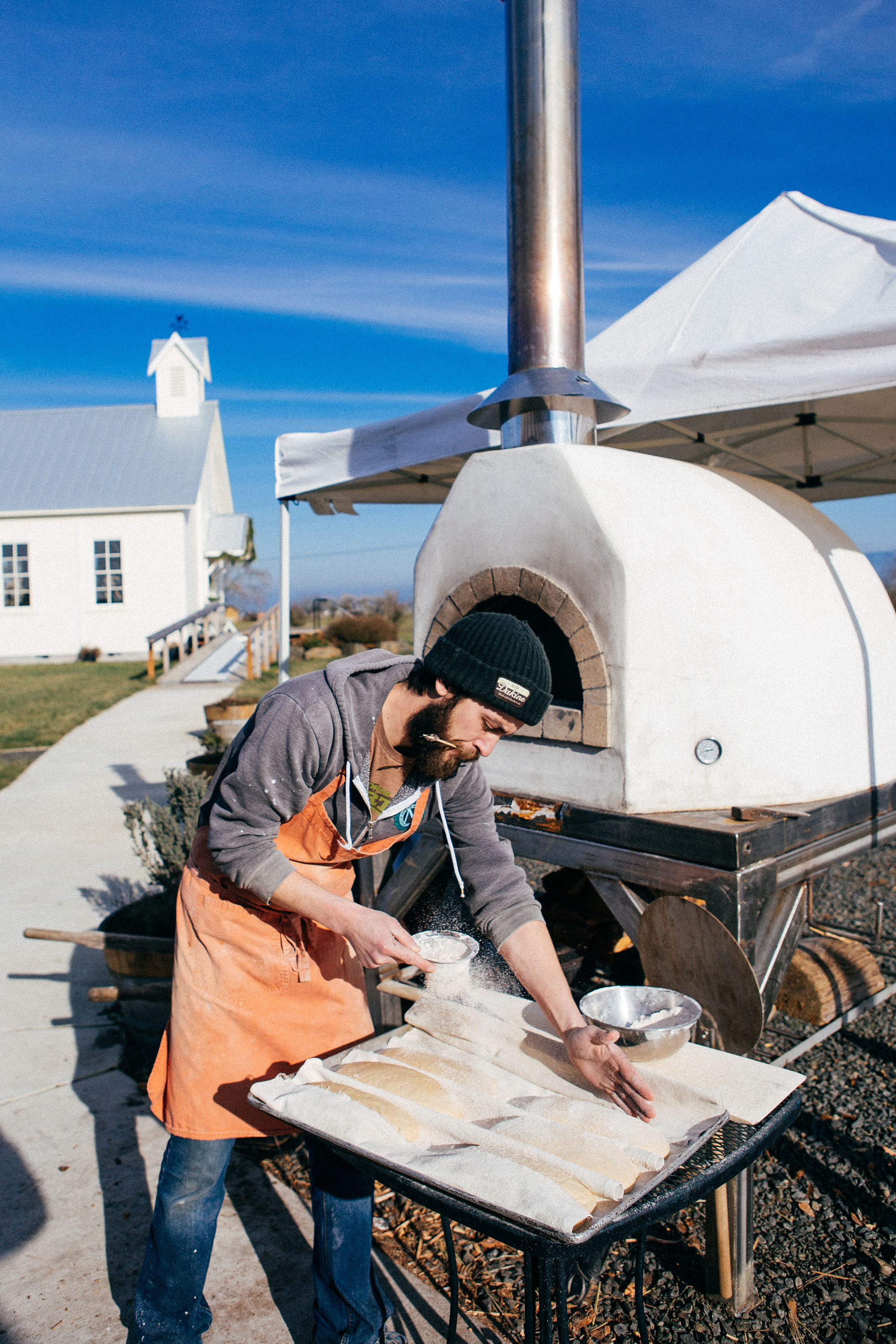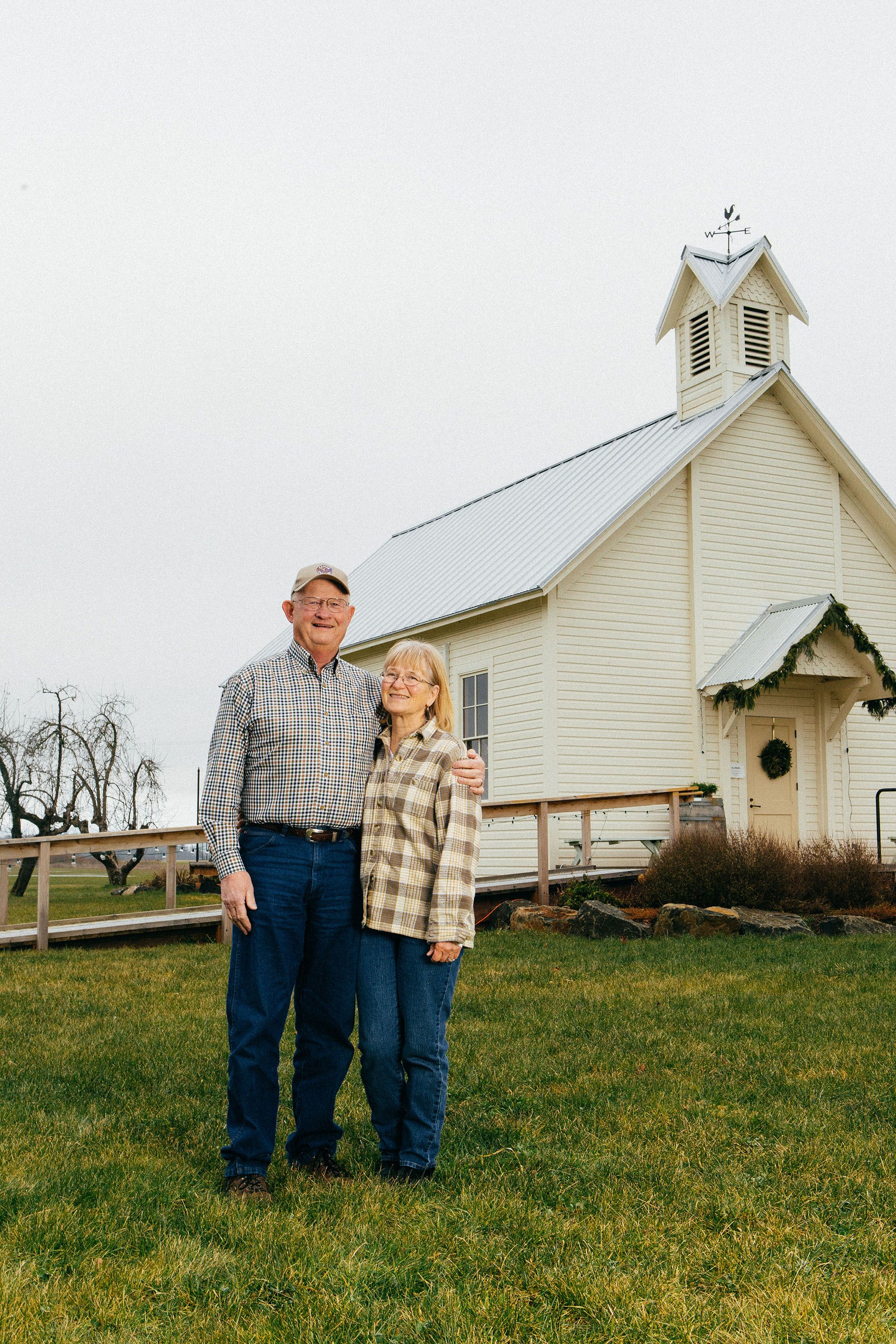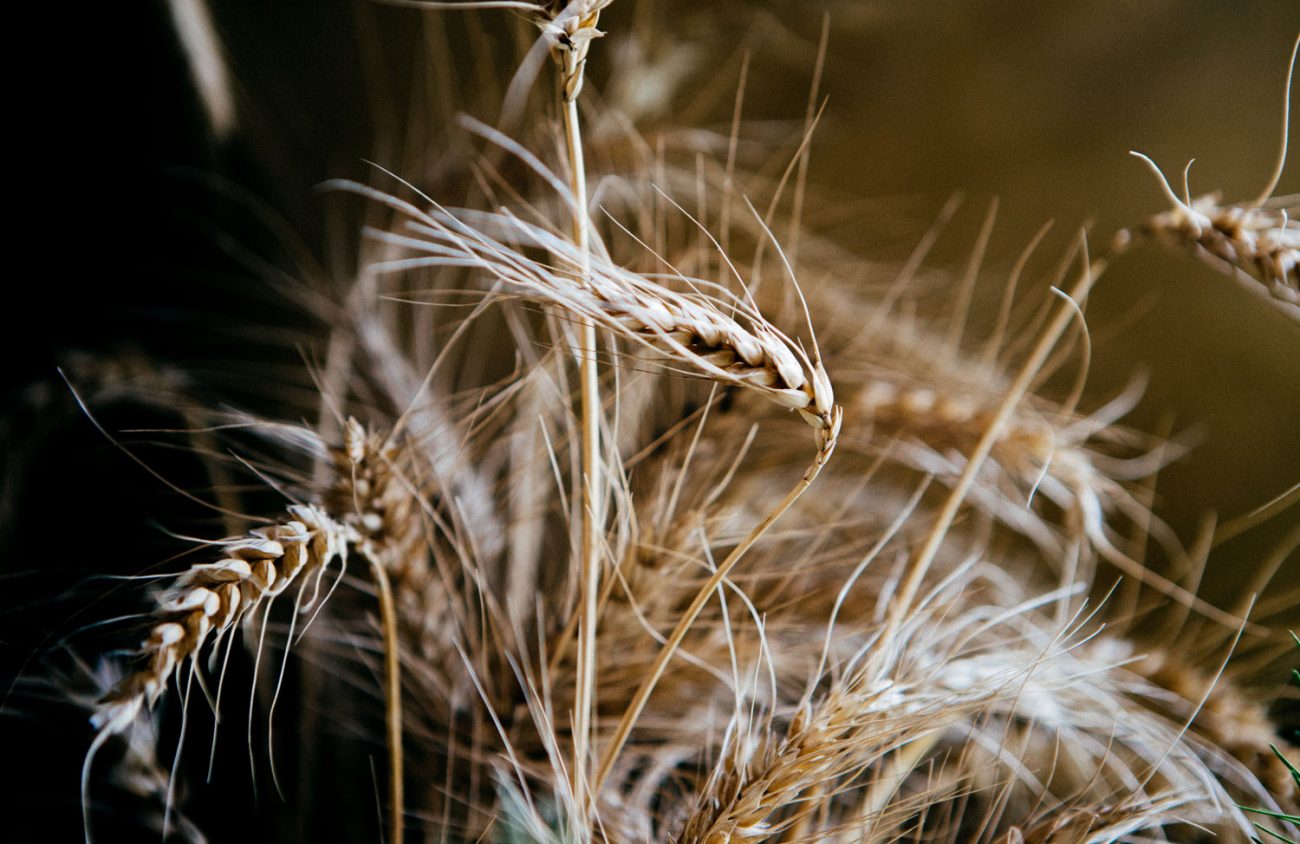To understand the future of the Willamette Valley as a food-producing region, it’s a good idea to look at its history. And to get a good look at its history, you have to go back about 50 million years.
Before the Pacific Northwest as we know it was formed, a series of volcanic islands known as the Siletzia Island Chain sprouted up, forming the backbone of what we now think of as the Coast Range.
Flash-forward 10 million years, and “the Siletzia block was accreted onto the North American Plate and covered with a thick pile of sediments,” says Leland O’Driscoll, a research associate at the University of Oregon’s Department of Earth Sciences.
The birth of the Cascade Volcanic Range established high grounds to the east, leaving a topographic trough now known as the Willamette Valley. Especially susceptible to erosion, the unstable volcanic and sedimentary rocks were whittled down by tributaries, trickling minerals downhill into our area over millions of years.
Now set your time machine to 14,000 years ago. A glacial mass dams a river valley in western Montana, producing a large lake. As the glacier begins to retreat, it releases the water from the lake. This happens again and again as the glacier advances and retracts.
The Great Missoula Flood, actually a series of more than 70 floods, was a wild geological event that ripped a chunk of glacier from its moorings and sent an enormous river of accumulated topsoil and mineral deposit throughout the Columbia Plateau and into the Willamette Valley.
So why look to the past?
Because as we move forward, with ever-increasing populations and widening growth boundaries — and as we become increasingly dependent on food sources from outside our local area — this resource, the Willamette Valley as a fertile cradle, a place where food sources can and should be nurtured, becomes all the more compelling.
Deep roots
I’m sitting in the cozy Camas Country Mill Store & Bakery off Meadowview Road, just north of the Eugene airport, on a bright, cold day.
The place smells wonderfully of baking bread, and the counters are stuffed with cookies, scones and muffins, all made from Camas Mill’s wholegrain flours. Sue Hunton, a retired sixth-grade teacher, is telling hungry patrons about today’s homemade soups.
Enlarge

Photo by Todd Cooper
Sue’s husband, Tom Hunton, has worked the land since he was a boy.
“My dad had an eighth-grade education,” Tom Hunton says. “Mom went through high school, but from 14 on, dad was self-reliant.”
Tom Hunton’s father, Everett Hunton, and his wife, Ellen, grew up in Harrisburg.
“Mom is 93, and she still does our books, and she goes to the post office and the bank for us every day,” Hunton says. “Her parents were Danish. And now, politically, socially, philosophically, we’ve come full circle. My great-grandfather was a baker in Randers, Denmark, and our millstones come from there.”
As a lifelong farmer, Tom Hunton has seen firsthand the changes in the area, and he and his family have been no small part of that adaptation.
In 1950, the Huntons, like so many Willamette Valley farmers, started growing and selling grass seed.
According to the Oregon Seed Council, grass seed is Oregon’s fifth largest agricultural crop. Statewide, grass seed is grown on nearly 400,000 acres. Of those, 360,000 acres are in the Willamette Valley. That is nearly equal to the acreage of all other types of agriculture combined.
Each year, less than two percent of grass seed grown in Oregon is used in the state. And between 15 and 20 percent is exported outside the U.S.
This is big business. Overall, grass seed farming drives more than $1 billion in annual economic activity in Oregon.
But throughout our area, there’s a movement towards relocalizing economies and focusing on using the inherent richness of the Willamette Valley to grow food.
“It’s changing in many ways. It’s not about yield, but about delivering baking performance and flavor,” Hunton says. “There’s still a lot of grass seed being grown. For many soils, that’s the best adaptation. But we’re seeing now where grass seed acres are going into hazelnuts, grain varietals and legumes. This is a new market, one that’s not commodity-based.”
In a typical grain economy, Hunton explains, farmers will have large fields planted with multiple varieties of, let’s say, wheat. (Think of that bag of generic all-purpose flour in your pantry; any number of wheat varieties ended up in it.)
But with consumer demand, that’s changing.
“We do identity-preserved growing,” Hunton says. “And our customers help us choose what they like, with different varieties that have different baking characteristics.”
Willamette Valley Bounty
Farming, as we know it, is a fairly recent activity in the Willamette Valley. But this area’s first-known residents, the Kalapuya Indians, “intensively managed plant communities to their advantage for millennia, with the skilled use of fire,” says UO archeologist Thomas Connolly. “Annual burns expanded the range of nutritious seed-bearing plants over brush.”
The region’s verdant ecosystems provided a sustaining and healthful diet for the thousands of indigenous peoples who migrated in and out of the valley over millennia. Local food sources included abundant fish along riparian waterways, game — especially deer and waterfowl — tarweed seeds, acorns and hazelnuts, berries and fruits and the root of the camas flower.
Between about 1770 and 1840, mortality of indigenous people in the valley exceeded 95 percent. They had no immunity to the diseases brought to the region. “By the time settlers made their way in greater numbers across the Oregon Trail, beginning in 1843, this was already the post-apocalyptic Kalapuya world,” Connolly says.
If we could go back in time and look at this area just a couple of centuries ago, it would look very different, before settlers began to drain and cultivate wetland areas.
Once the Kalapuyas’ annual burning was suppressed, the forests began to encroach on the valley, and parkland and savannas filled with brush.
The introduction of grazing domesticated animals — cattle, sheep and hogs — impacted water sources and streambeds as well as the plant and animal life they once supported.
Livestock was tough on the indigenous food supply. George Riddle (the Douglas County town is named for his family) wrote about the native peoples’ carefully tended tarweed fields: “At that time Cow Creek valley looked like a great wheat field. The Indians, according to their custom, had burned the grass during the summer, and early rains had caused a luxuriant crop of grass on which our immigrant cattle were fat by Christmas time.”
And pigs destroyed the camas fields.
For thousands of years the Willamette Valley offered a bounty of food sources to its people. But in little more than a century, food across the country, and here at home, has been financially and systematically commoditized. Though we live in one of the lushest food-growing environments in the world, the food on your plate likely rolled in by truck or train, or on a plane.
Is it possible to bring what we eat back in line with local food systems?
New Vistas
What if our local farms could grow our food?
The Camas Mill story, with its transition from forage and turf grasses to clover and meadowfoam, then to vegetable and cover crop seeds, and most recently to beans, lentils and grains, is about adaptation and a good deal of juggling.
Enlarge

Photo by Todd Cooper
“It complicates matters a lot, with so many more crops,” Hunton says. “We’re growing seven different varieties of wheat. It used to be grain was harvested and shipped in the fall, but now we have to maintain inventory for 15 to 18 months, which impacts cash flow.”
The Huntons serve as a seed source for many other farmers. And as the prices for one crop, like grass seed, falls, other crops, like hazelnuts or durum wheat, might just prove more lucrative.
“Most growers want to grow,” Hunton says.
And as farmers like the Huntons have kept abreast of changes in the food landscape, it’s opened new vistas for their efforts. “We supply bakeries, high-end chefs, as well as the craft brewing and distilling movement,” Hunton says.
For the farm of the future, it might not be about more, but about different. “We’re maxing out our arable acres. But we knew we’d never win in a commodity community,” Hunton says. “We knew we had to be different in how we processed the grain, that we’d find value there.”
The Huntons favor crops that have an inherent adaptability and that are disease resistant.
“We have organic and conventional both,” Hunton says. “Our organic uses only organic inputs, milling and designated processing equipment.”
Hunton points to an example. The farm recently began growing buckwheat, which had traditionally been grown only as a cover crop or as a component of animal feed. But with the addition of an onsite roaster and de-huller, their mill has begun to produce kasha, or buckwheat groats.
“The mill became a critical piece of infrastructure,” Hunton says.
A few miles from their country store, the Camas mill millstones whirl with a constant hum. On the day I visit, they’re processing rye grain destined for the Fremont Mischief Distillery in Seattle.
Finding Common Ground
Camas Country Mill, in its own humble way, is as cosmopolitan as it comes, adapting to global appetites and providing key ingredients to a variety of food preparers — from home cooks to high-end chefs.
“We had to learn not just how to grow and to process, but how to market our product,” Hunton says.
At the mill, sacks printed in English and Ethiopian await filling. The Huntons grow teff, an annual bunch grass that is the key ingredient in the Ethiopian flatbread staple, injera.
“There’s been a farm connection in place in this area for a longtime, with farmers markets and CSAs [Community Supported Agriculture],” Hunton says.
Generations have enjoyed ripe-picked berries or delectable chanterelles, or any of the copious bounty of fresh fruits and vegetables that local farms have on offer. But the idea of locally sourced grains and legumes is a fairly new one.
“Go back 10 years, and the grains — which provide 60 to 70 percent of our calories — were the last that had that local focus,” Hunton says. “Nobody cared where their flour came from. But now, grains can have traceability.”
With its sizeable land base and its grain cleaning and storing facility, Camas Mill is able to focus on cultivating grains and legumes that the market craves.
“The emphasis on local food is evolving,” Hunton says. “And we’ve asked ourselves what we could do to adapt.”
Food Smart
Camas Country Mill is in good company.
Oregon State University Extension Service’s Small Farms Program hosts an annual Small Farms Conference, which drew more than 1,000 people last year.
And at a recent fill-your-pantry event, the Willamette Food and Farm Coalition invited farmers from throughout the area to offer their goods, including grains and legumes — as well as storage crops like onions, squash and garlic — direct to the consumer.
Willamette Food and Farm Coalition’s Lynne Fessenden explains.
“The Fill-Your-Pantry event started out as a way to support farms that were growing beans and grains, by helping customers to be aware that farmers are growing these crops,” Fessenden says. “At first, there were just two farms: Greenwillow Grains in Brownsville and Camas Country Mill.”
Participants in 2016 ranged from Adaptive Seeds and Deck Family Farm to Organic Redneck and Wintergreen Farm.
Even the full list is far from a complete picture of the many small farms making a go of growing in the fertile Willamette Valley.
“This is the first year that Camas Mill didn’t sell at the event,” Fessenden says. “It’s a sign of their success. They don’t need the event anymore because they’re not selling by the pound, they’re selling by the pallet.”
The Willamette Farm & Food Coalition facilitates and supports the development of a secure and sustainable food system in Lane County and Camas Mill plays a vital role in that vision.
“Ten years ago, no one was growing hard red wheat in the valley, but in a five year stretch, we went from no locally grown wheat in the area, to two farms, both growing, and milling wheat for baking,” Fessenden says. “That gives me great hope.”
But Tom Hunton remains humble.
“We think we understand the agronomy, the cultural practices of raising a crop,” he says. (Agronomy is the science of soil management and crop production.) “But the outreach and marketing, we felt we needed help with.”
Camas Country Mill employs just 12 people, not all at full-time, but judging from the scale of their operation, one would think they had a lot more help.
“This venture, this effort, brings to us employees with a lot of passion, for what we’re doing,” Hunton says.
The farm hosts weekly school tours. “The kids get to see the grain in the field, they get to grind some flour, and then they get a homemade muffin.”
Hunton says he’d like to see more opportunities for communities to connect to food and where it comes from.
Labor of Love
Growing is one aspect of farming. Though the relocalization movement encourages consumers to mindfully choose food options from nearby, Camas Mill depends on a growing web of channels to sell their products. “The cold, hard truth is that distribution is complicated,” Hunton says.
Camas Mill partners with Hummingbird Wholesale to help facilitate that distribution.
“Tom is one of the smartest men I know,” says Hummingbird co-owner Charlie Tilt. “He’s the ultimate example of what a farmer can be.”
Tilt and Hunton have worked together since 2012 to grow the local food economy.
“Tom approached us as a conventional farmer interested in trying to raise grains and beans,” Tilt says. “We were initially not interested, since we sell only organic. But we were interested in seeing and supporting the transition to organic acreage, and Tom just won us over.”
“If you don’t support transitional products, then you can’t get to organic,” Tilt notes.
The collaboration with Hummingbird was instrumental in getting the Camas Mill up and running.
“People don’t buy wheat berries, they buy flour,” Tilt says. “And we penciled out that the mill would need to do 500,000 pounds of production per year to pay for itself.”
Early adapters included the Bread Stop Bakery in Eugene and New Seasons Market in Portland.
But Camas Mill also does plenty of self-distribution to restaurants and bakeries, shipping across the country. Their regular clients include Grand Central Baking, with outposts in Portland and Seattle; San Francisco’s famous Tartine Bakery; Prager Brothers Artisan Breads in Carlsbad, Calif.; Selam Foods in Minneapolis, Minn.; and celebrity chef Dan Barber, at the inimitable Blue Hill restaurant, in upstate New York.
And these wholegrain flours are not just destined for upscale eateries.
Camas Country Mill, notes Hunton, also distributes to “eight Oregon school districts and two universities, who provide whole grain baked goods with our flour.”
The mill has partnered with FOOD for Lane County to offer its high-protein soup mix, a combination of low-glycemic grains, beans and lentils, to food pantry sites across the region.
“By working with a food rescue facility, we’re able to give back to the community,” Hunton says.
Deb McGeorge, FOOD for Lane County resource manager, couldn’t be more grateful.
“Camas Country Mill helps us in our choices on what to produce locally on our leased land in Junction City (lentils, barley, pintos, garbanzos, etc.). They farm and mill product for us,” McGeorge says. “They teach us sustainable ways to feed the multitudes”
Camas Country Mill is a multi-generational effort. From Hunton’s mother running errands and keeping the books, to his wife Sue Hunton minding the store and his son Jason Hunton co-managing the farm.
So, as populations grow and resources become scarcer, what would Hunton’s hope be for the next generation or for his young grandson Owen?
“I hope he’d see that what grandma and grandpa, great-grandma and his mom and dad are giving him are the opportunities to remain on the land and to be connected to his community, by producing food that’s wholesome and somewhat unique,” Hunton says.
“That’s a solid ground to build a future on.”
Camas Country Mill and Bakery is open 8 am-3 pm, Tuesday-Saturday, at 91948 Purkerson Rd., in Junction City. You can also find their products at Hummingbird Wholesale, 150 Shelton McMurphey Blvd, in Eugene.
